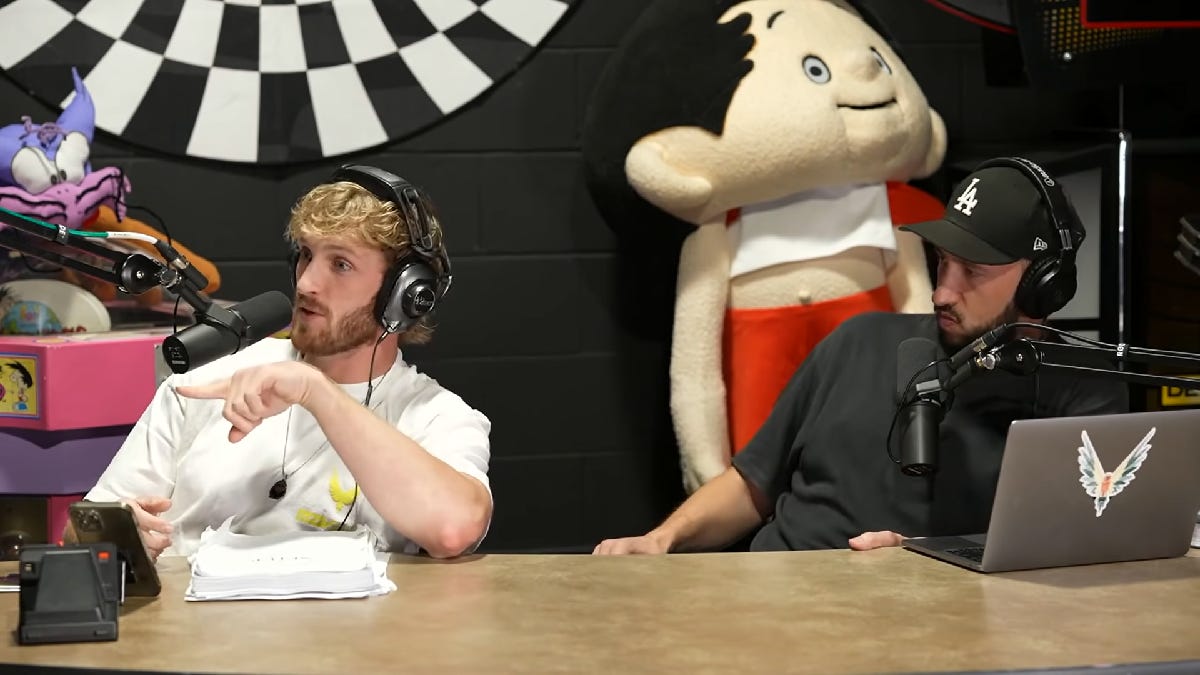Video podcasts are low-hanging fruit
YouTube is the third most popular podcast player behind Apple and Spotify.
Welcome! I'm Simon Owens and this is my media newsletter. If you've received it, then you either subscribed or someone forwarded it to you. If you fit into the latter camp and want to subscribe, then you can click on this handy little button:
Let’s jump right into it…
Video podcasts are low-hanging fruit
Spotify announced this week that it’s going to make its video tool more widely available to podcasters. Previously, this functionality was only provided to Spotify-exclusive podcasters like Joe Rogan, but now it’s slowly being rolled out to podcasters who host on Anchor. It’s unclear if it’ll ever be made available to non-Anchor podcasters.
The Variety write-up of the news included this tidbit:
Spotify said it has found that users want the option to switch between audio-only and video depending on what they’re doing and what they’re listening to. In the Spotify mobile app, video-enabled podcasts can be viewed in full-screen mode and listeners can switch back to audio-only at any time.
Spotify’s moves into video aren’t entirely surprising when you consider that YouTube is one of the top platforms for podcast consumption. In fact, some surveys have found it’s the third most popular podcast player behind Apple and Spotify, which is especially incredible given that the vast majority of podcasts don’t even have a YouTube presence.
Ten years ago, I wouldn’t have believed you if you told me that video podcasts would become a thing. After all, who wants to see folks sit around a table and talk into microphones?
As it turns out, a whole lot of people want to watch such a thing. Famous YouTubers started erecting recording studios inside their houses and invited their famous friends to come and speak to them. They threw up a few cameras to record video and then, POOF, they suddenly had a longform video show.
The strategy they settled on was brilliant. Most launched two separate channels: one for the complete, longform podcast episodes, and a second channel for short clips. Take Impaulsive, Logan Paul’s podcast, as an example. Its main channel has 3.43 million subscribers and 410 million channel views. Individual episodes are over an hour long. And then there’s a second channel called Impaulsive Clips that has 938,000 followers and 400 million channel views. Its videos are anywhere between one and 12 minutes long.
In retrospect, it isn’t actually that shocking that audiences enjoy watching these videos. If you look at any cable news program — from Sports Center to Anderson Cooper — what is it other than just a couple people sitting around a table and talking? Audiences enjoy watching a person’s facial expressions and reactions in addition to hearing their voice. Video podcasts are great because they don’t require that much extra production and yet increase your chances of discovery, either through YouTube’s homepage or its massively powerful search engine (here’s the part where I remind you that YouTube is the world’s second most popular search engine behind Google).
Of course, many podcasts record their interviews remotely, meaning there’s no opportunity for in-studio video recording. Sure, you could record the interview using Skype or Zoom, but it’s usually of poor quality, with the words not even synced with the speaker’s lips.
Luckily, though, podcast recording platforms like Zencastr and Squadcast recently launched video functionality. What’s great about these apps is they record natively to a person’s machine and then upload that recording as a separate file to the cloud. This eliminates lag and produces a superior recording. I use Squadcast for my own podcast interviews, and it can sometimes sound like the other person is in the room with me.
Given the success of video versions of podcasts, I definitely think it’s something more podcasters can experiment with. The added production time is minimal, and it’s a great way to squeeze more value from the interviews you record.
I say this as a complete hypocrite, since I host a podcast and don’t currently create video versions of it. But writing this column lit a fire under my ass; I added an item to my to-do list to test out a few video episodes. If you’re interested in being my guinea pig on this, don’t hesitate to reach out.
Quick hits
Snapchat regularly commissions original video series and will pay upward of $50,000 per episode. Here's a good interview with the person who commissions these series. [Digiday]
On Twitter, I published a quick thread gaming out an idea in which Netflix launches a serialized fiction vertical so that it can create a better IP pipeline. [Twitter]
Several companies are taking stabs at creating the Netflix-for-audio, and it looks like The New York Times might throw its hat into the ring. [Nieman Lab]
Google Play Store is cutting its fees in half for subscription products. [The Verge] The dam is breaking. This kind of stuff has huge ramifications for the content industry.
Some details on how Pinterest plans to pay creators. [Insider]
Just about every sports media company is getting into sports betting. Definitely makes you wonder if there's a bubble forming. [Digiday]
This is an interesting business model: the company buys the ownership rights to old viral YouTube videos with the hope it can recoup its investment in the longterm. In exchange, the makers of the videos get a nice lump payment upfront. [Tubefilter]
Coming next week…
If you live outside of India, you may have never heard of ScoopWhoop, but it’s one of the most viral publishers in South Asia. I interviewed two of its executives about how it was founded, its successful venture into video, and where it fits within India’s media ecosystem.
Look for that article to hit your inbox sometime next week.



